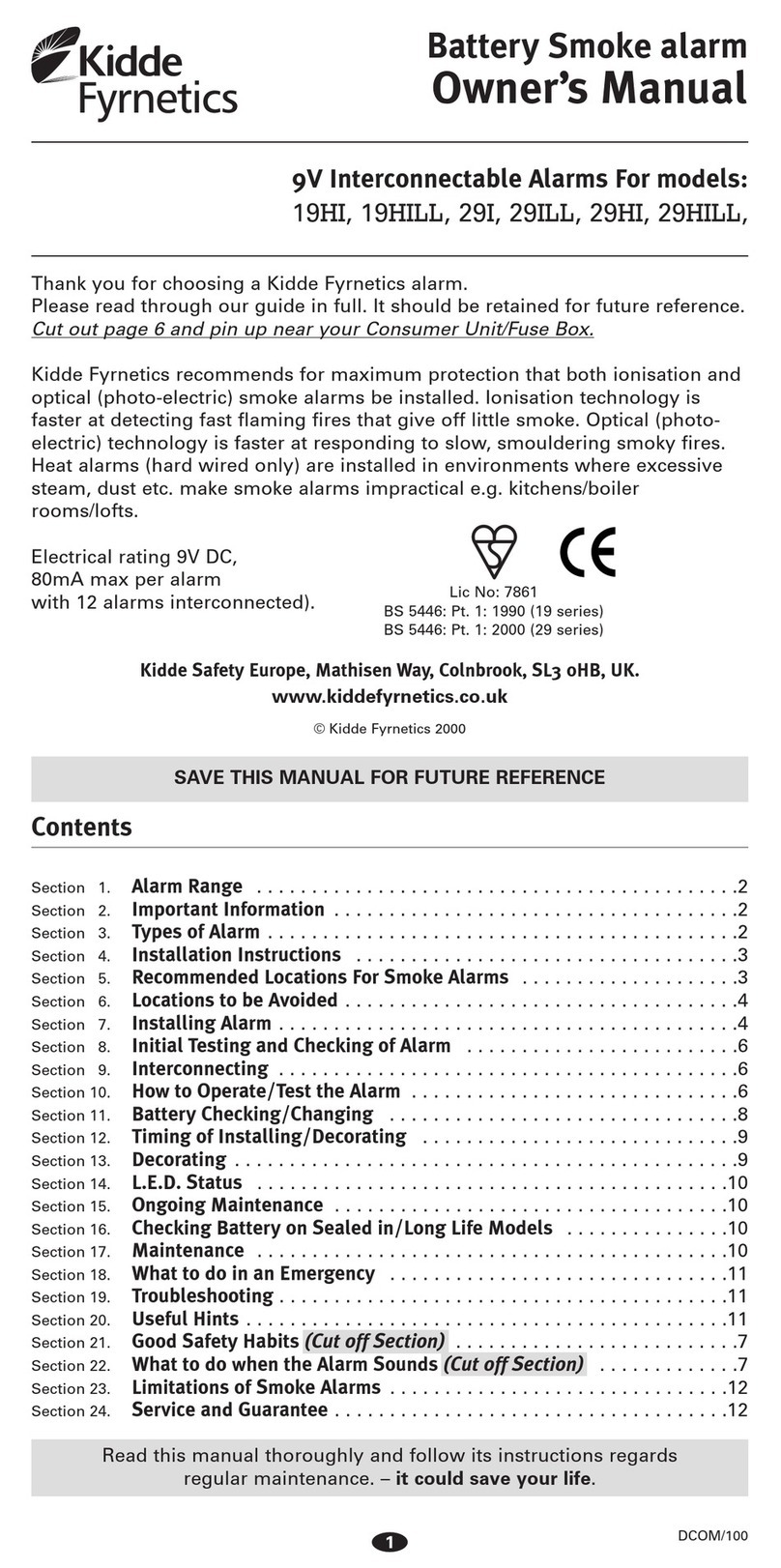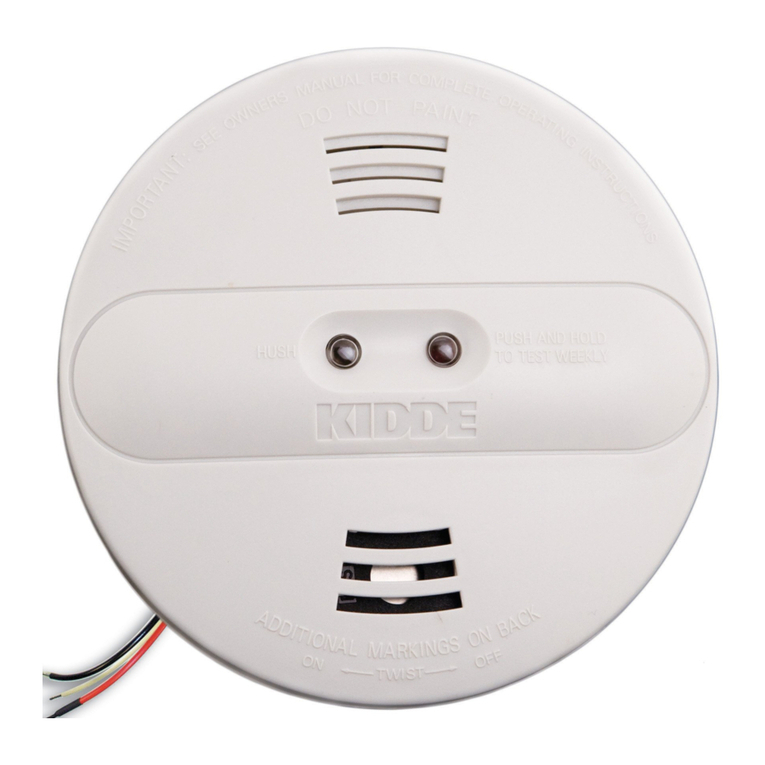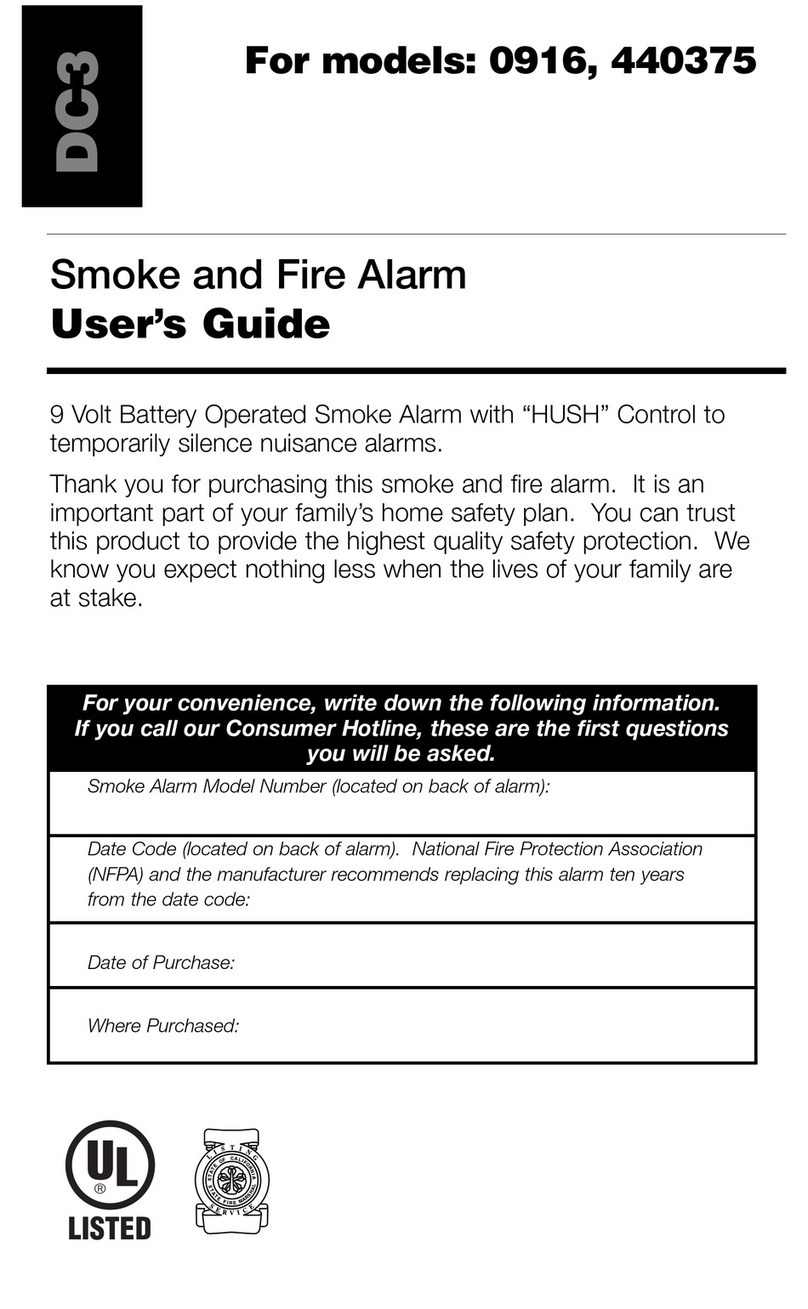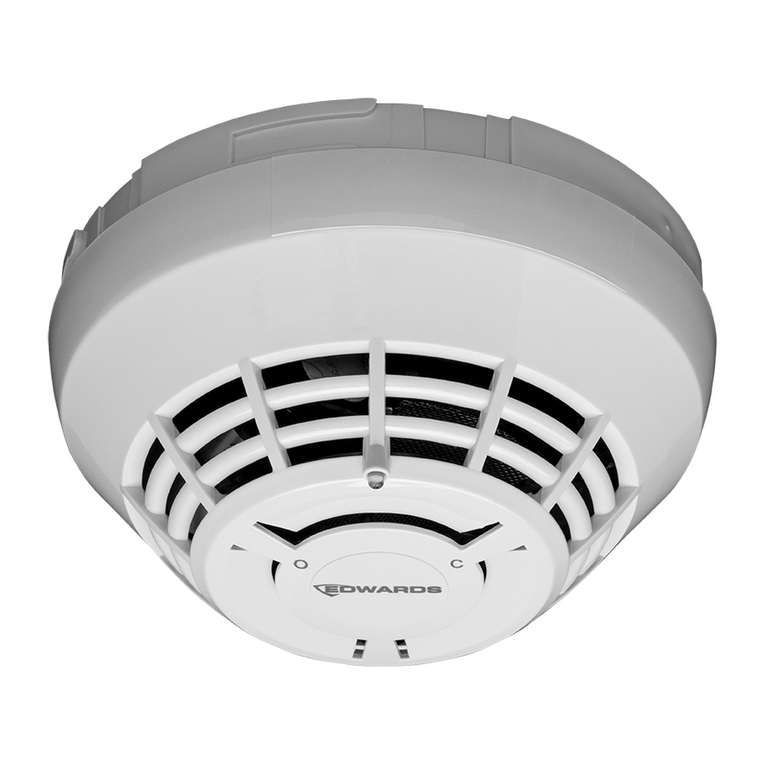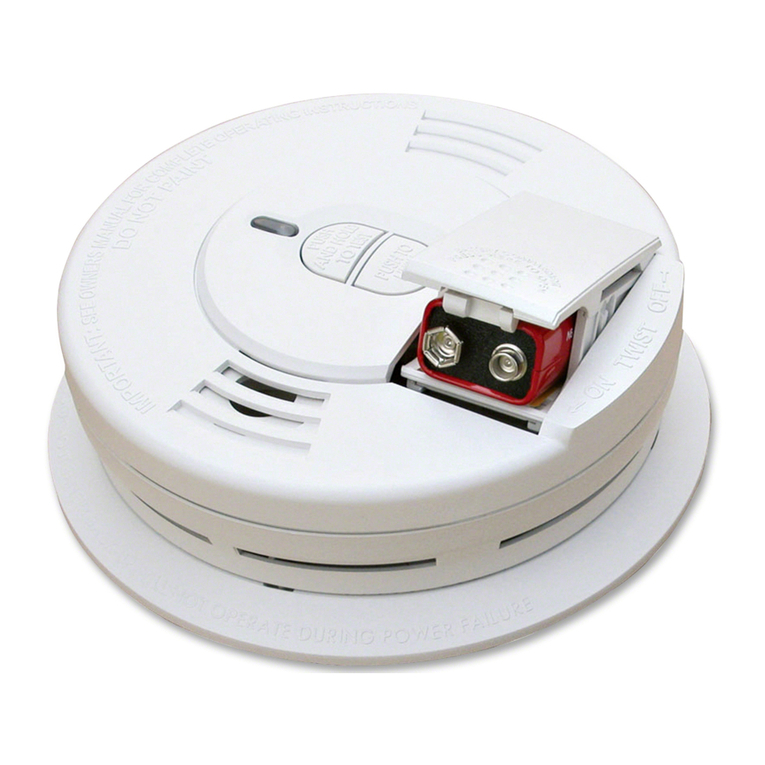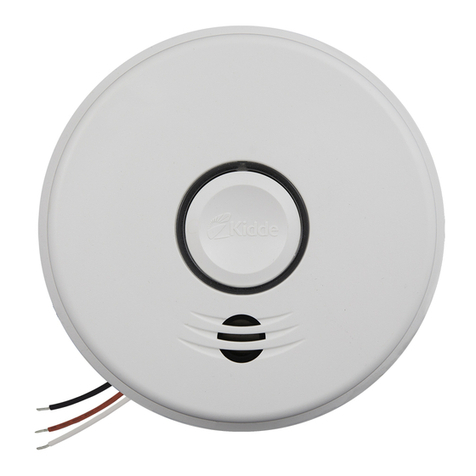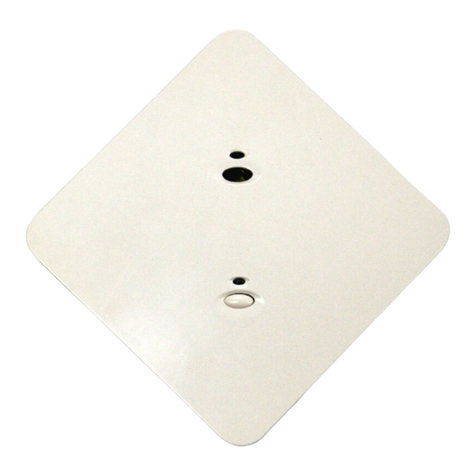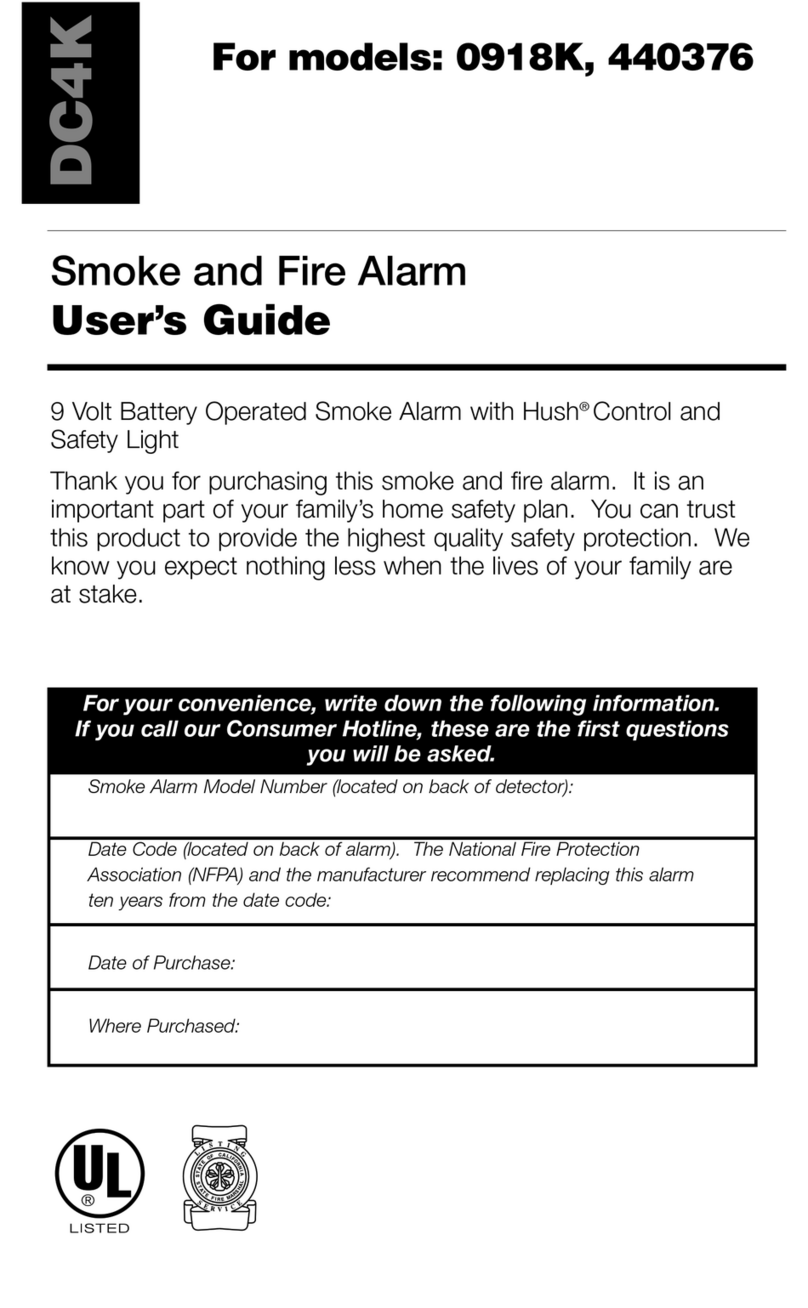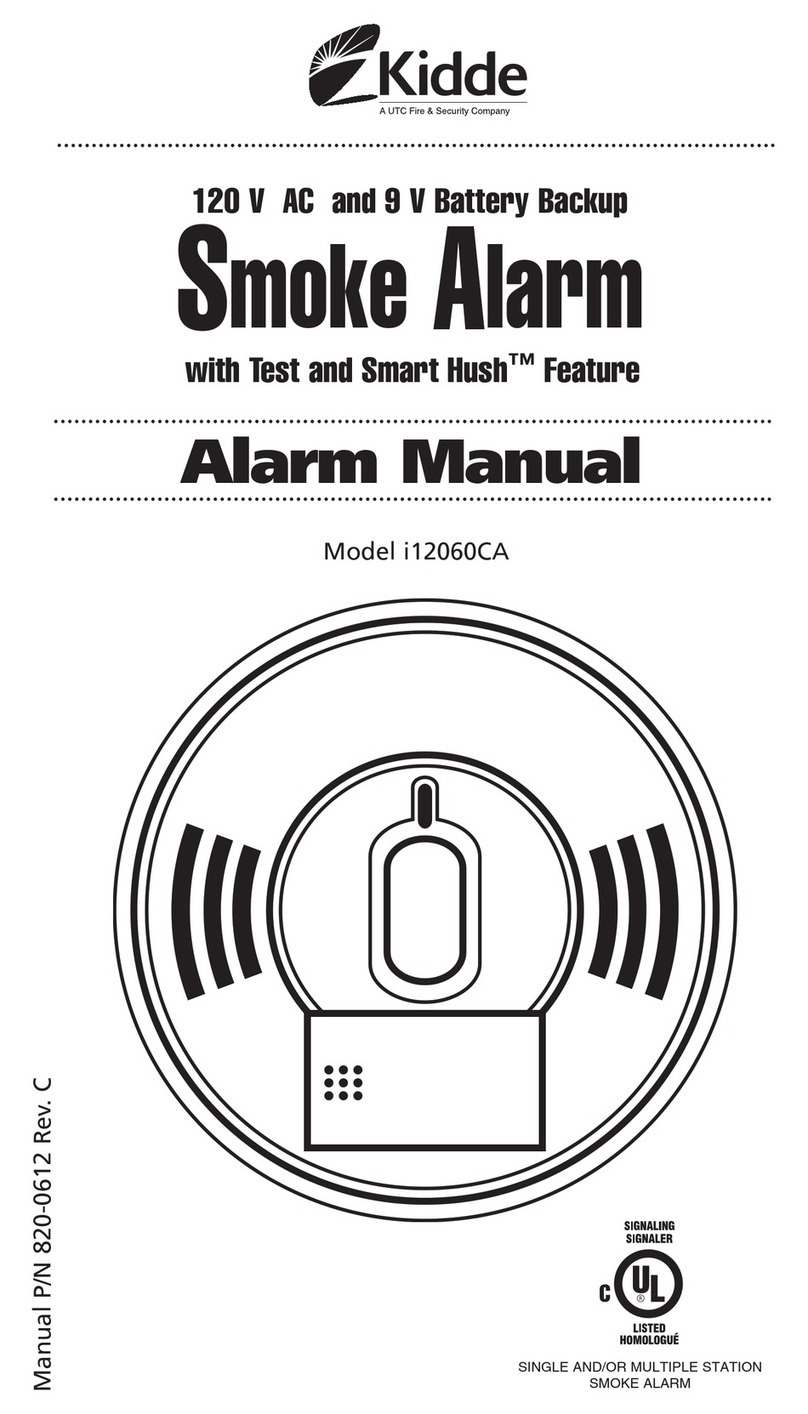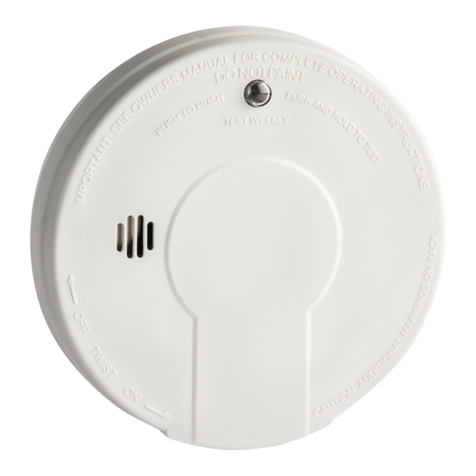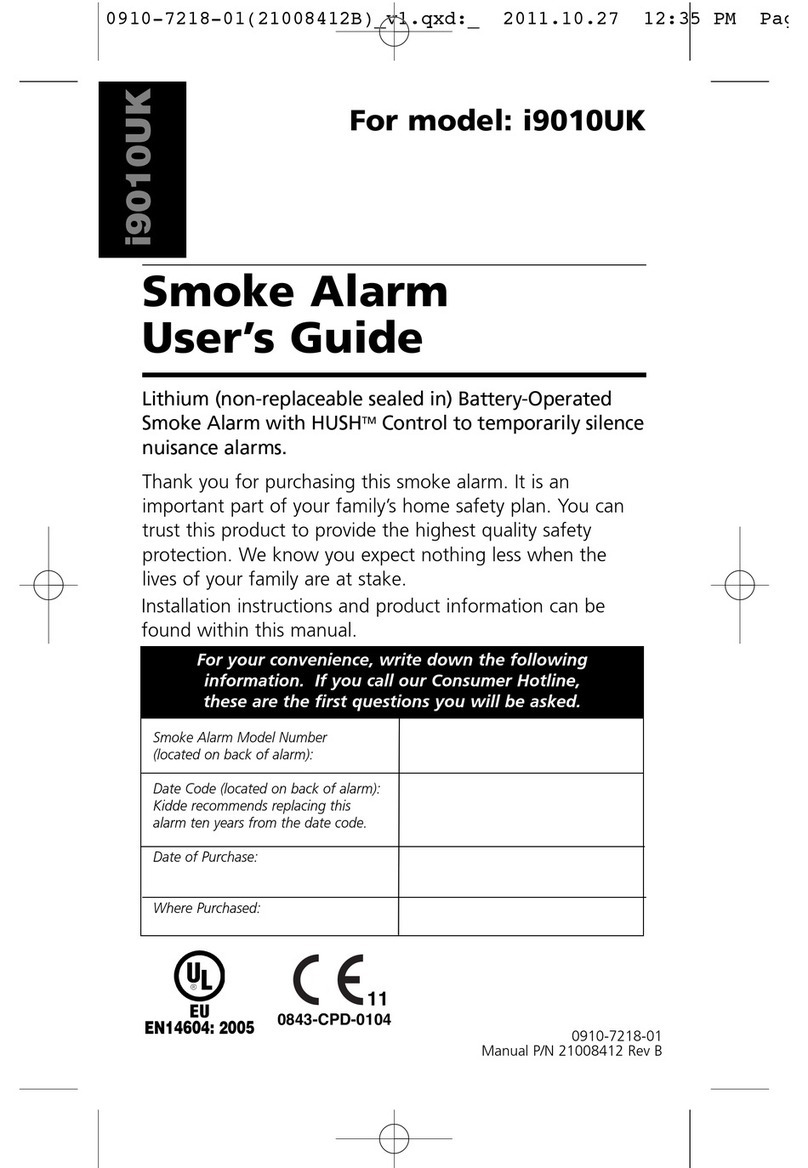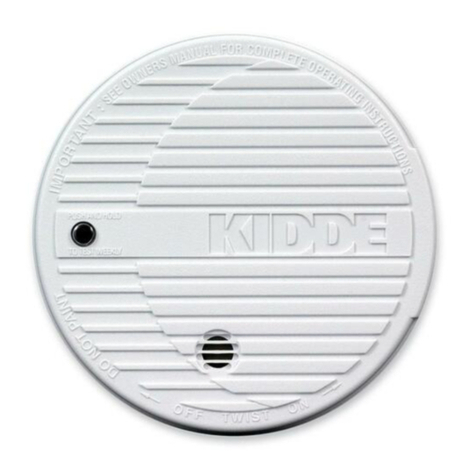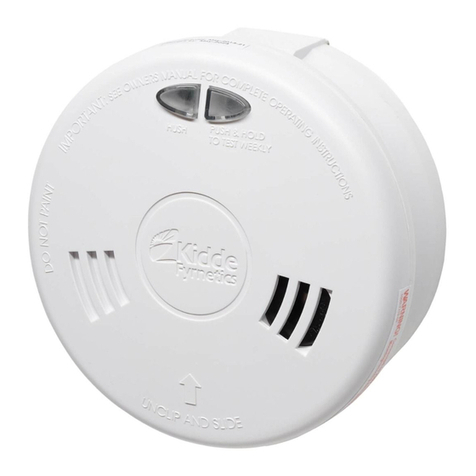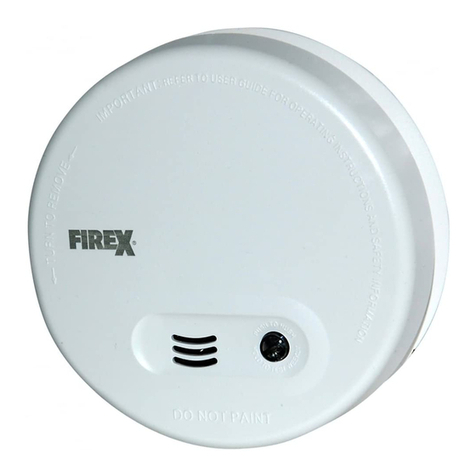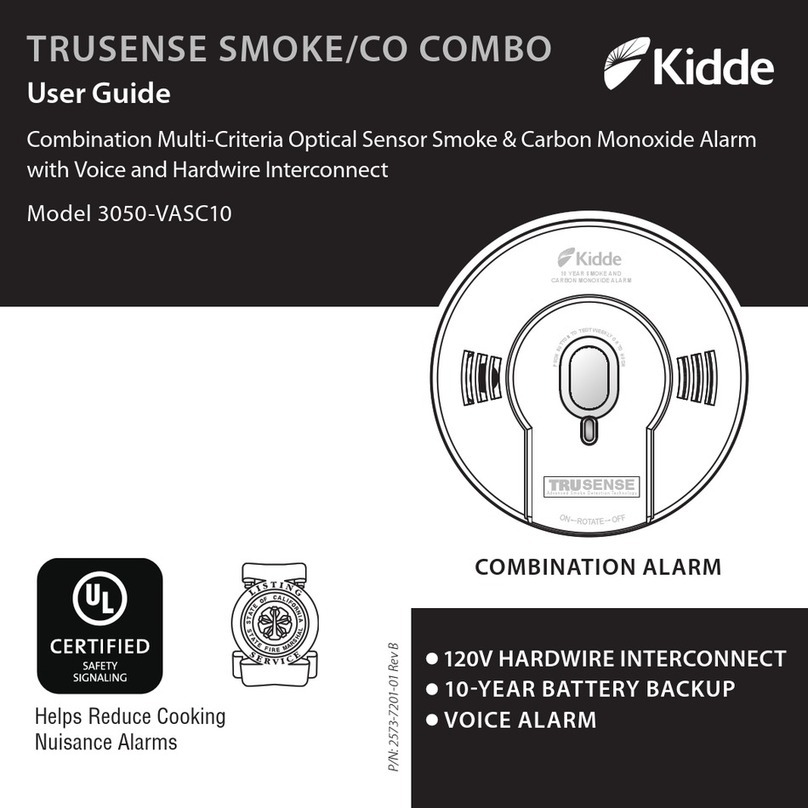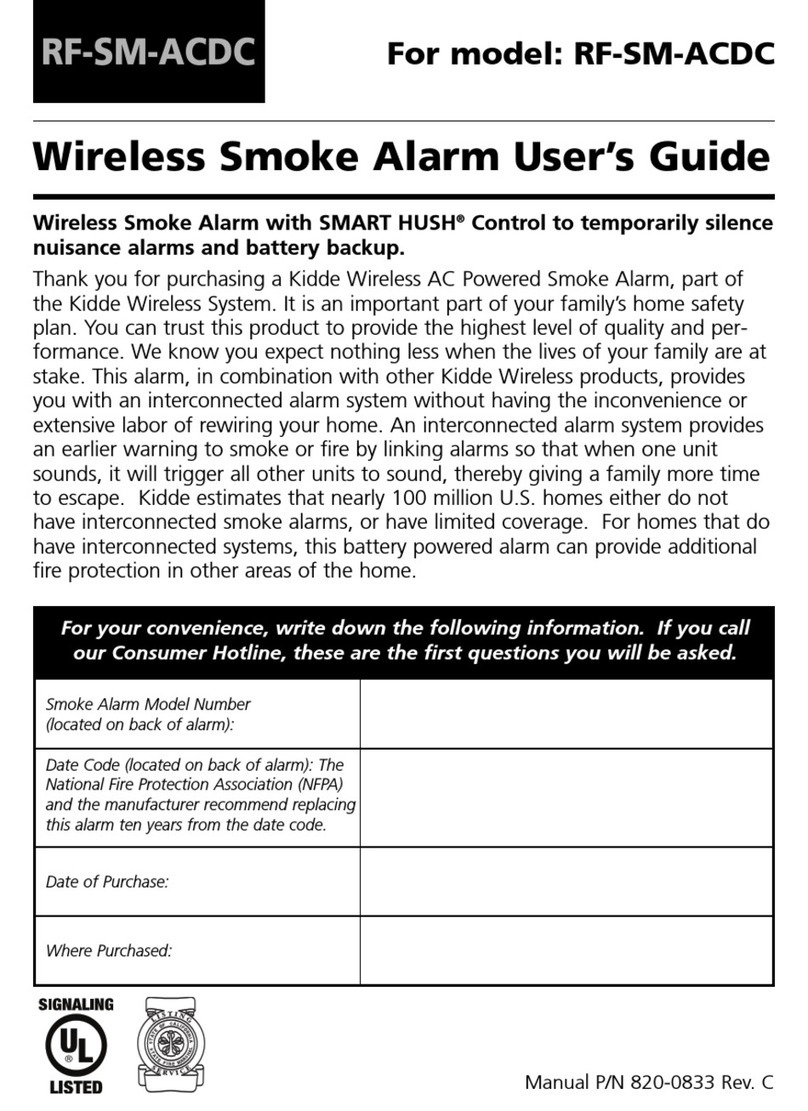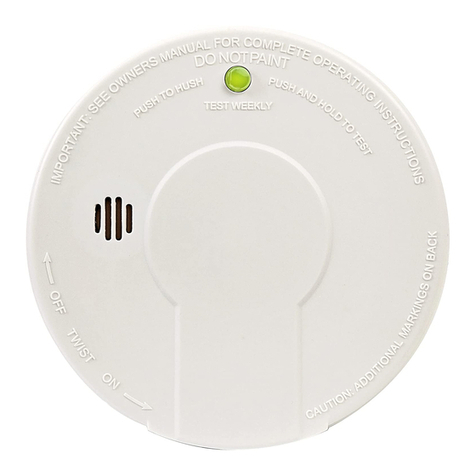Features
7
• Smoke alarms cannot provide an alarm if smoke does
not reach the alarm. Therefore, smoke alarms may not
sense fires starting in chimneys, walls, on roofs, on the
other side of a closed door or on a different floor.
• If the alarm is located outside the bedroom or on a
different floor, it may not wake up a sound sleeper.
• The use of alcohol or drugs may also impair one’s
ability to hear the smoke alarm. For maximum
protection, a smoke alarm should be installed in
each sleeping area on every level of a home.
Carbon Monoxide (CO) Alarm
The carbon monoxide (CO) alarm constantly monitors the
air for the presence of CO. It will alarm when there are
high levels of CO present, and when there are low levels
of CO present over a longer period of time. When a CO
condition matches either of these situations, the
alarm/voice message warning system will sound,
accompanied by the flashing red LED light.
The carbon monoxide sensor uses an electrochemical technology.
CAUTION: This alarm will only indicate the presence of
carbon monoxide gas at the sensor. Carbon monoxide gas
may be present in other areas.
This device is designed to protect individuals from the
acute effects of carbon monoxide exposure. It will not
fully safeguard individuals with specific medical
conditions. If in doubt, consult a medical practitioner.
Installation of the device should not be used as a
substitute for proper installation, use, and maintenance
of fuel-burning appliances, including appropriate
ventilation and exhaust systems.
Individuals with medical problems may consider using
warning devices which provide audible and visual signals
for carbon monoxide concentrations under 30 ppm.
Never ignore the sound of the alarm!
Determining what type of alarm has sounded is easy
with the Kidde Combination Smoke/CO Alarm. The
voice message warning system will inform you of the
type of hazard occurring.
